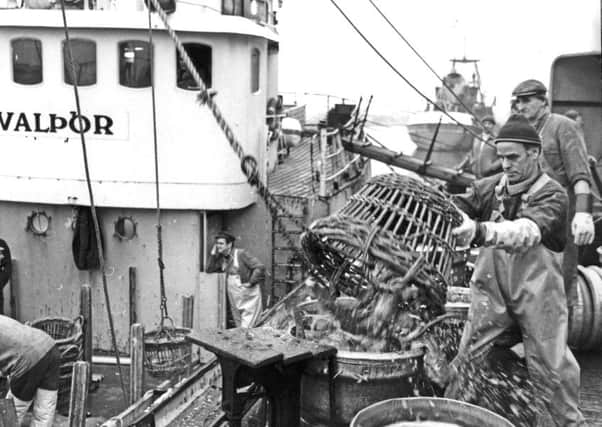Nostalgia on Tuesday: Crest of a wave


Prior to the first dock’s development, Hull’s sea-going trade was conducted from privately-owned wharves and quays on the part of the River Hull known as the Haven or Old Harbour. By the late 17th century, Hull was the third port in the realm after London and Bristol, exporting lead, cloth as well as importing flax, hemp iron and tar. The appearance of larger cargo vessels and a growth in trade necessitated reorganisation to encourage the town’s prosperity. The Old Harbour was also narrow and prone to a build-up of mud.
On Tuesday, September 29, 1778, the Dock, designed by Henry Berry and John Grundy, was officially opened ‘‘for the admission of ships’’ and, at the time, was the largest in England. A Dock Company had been formed in 1773 by the Hull Corporation, Hull Trinity House and Hull merchants. This was the first statutory dock company in Britain.
Advertisement
Hide AdAdvertisement
Hide AdThe ‘‘Manchester’’ ship, belonging to Staniforth and Ramsay of Hull, went in first to the new Dock (a wet dock), and was decorated with a great number of flags of various nations. This was followed by the ‘‘Favourite’’, of 1,000 tons, the largest ship in the port. Around 20,000 spectators watched the event unfold from early morning. With sea-borne trade rapidly increasing and easier access being required through the River Humber, a second dock, the Humber Dock, comprising a seven acre site, was opened in July 1809 at a cost of around £220,000.
The opening ceremony started at 6.30 am and was attended by the Corporation, officials from Trinity House and members of the Dock company. By this time, the 1778 Dock was known as the Old Dock. Cannon firing, bunting displayed all around, much cheering, singing and music playing, along with breakfast and dinner celebrations at the Neptune Inn, were all part of the opening festivities.
Twenty years later, on June 1, 1829, the Junction Dock was completed from designs by James Walker. The average tonnage of the Humber dock had reached a certain level and so the Dock Company built a third dock between the Old and Humber docks. This had been a stipulation of an Act of 1802 for the construction of the Humber Dock. This condition was satisfied in 1825. Everything was ready by 9am for the Junction Dock launch and JC Parker, chairman of the Dock Company officiated at the opening ceremony. He declared Hull port ‘‘is now the most commodious in the kingdom’’. Costing £180,000, the dock was planned to hold 60 square rigged vessels.
There was a flurry of activity in Hull concerning the opening of new and the renaming of older docks around the mid-19th century. The Railway Dock was officially opened on December 3, 1846; the Victoria Dock on Wednesday, July 3, 1850. The Old Dock was renamed Queen’s Dock in 1854 in honour of the Royal visit to Hull by Queen Victoria and Prince Albert; the Junction Dock was renamed Prince’s Dock. Developments in the latter half of the 19th century included the opening of the Albert Dock in July 1869; William Wright Dock, May 24, 1873; St Andrew Dock, September 24, 1883; and the Alexandra Dock, July 16, 1885.
Advertisement
Hide AdAdvertisement
Hide AdDuring the early years of the 20th century the Riverside Quay opened in 1907; and the King George Dock on June 26, 1914. The latter dock, a joint development between the Hull & Barnsley Railway and North Eastern Railway, was designed by Sir Benjamin Baker, who had been consulted on the Aswan Dam, the Forth Bridge and London’s Metropolitan Railway.
Thousands gathered for the opening where George V officiated, saying: ‘‘It is a deep satisfaction to me to know that the rapid progress in recent years of the trade of Hull with all parts of the world, and the increasing number of vessels that enter and leave its port, have impelled you to increase your shipping facilities. I congratulate you warmly on the successful accomplishment of your task by the addition of this magnificent dock to the resources of your port.’’
Having finished his speech, the King declared the dock open, and named it ‘‘The King George Dock’’.
As the 20th century progressed, Hull gradually lost a number of its docks mainly due to automation, the shipping container, privatisation and the Cod War. The result was the loss of thousands of jobs. The Old Dock or Queen’s Dock which closed in 1930, was acquired by Hull Corporation for around £100,000, filled in , landscaped and renamed Queen’s Gardens.
Advertisement
Hide AdAdvertisement
Hide AdAfter closing in 1968, the Junction Dock or Prince’s Dock was eventually redeveloped and became the site of the Prince’s Quay Shopping Centre. An extension to the King George dock started in 1968 was officially opened a year later by the Queen and named appropriately Queen Elizabeth Dock.
In 1968, the Humber Dock closed permanently and 15 years later opened as part of the Marina. Also forming part of the Marina is the Railway Dock, closed to shipping in the late 1960s and acquired by Hull Corporation. The Albert Dock had joined with the William Wright Dock in 1910 and the area was closed to commercial traffic in October 1972.
Recent developments in the docks area have seen the opening of container terminals; the Hull All-weather Terminal; the Rotterdam Terminal; passenger services to Zeebrugge; and a sea to rail biomass facility.